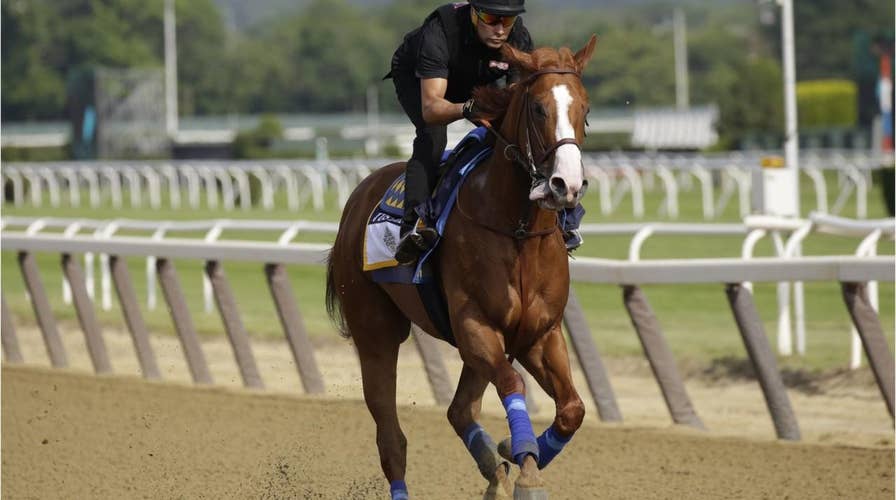What to know about racing horse Justify
Everything you need to know about racing horse Justify.
Justify made racing history Saturday with his victory in the Belmont Stakes, becoming only the 13th Triple Crown champion and the first since American Pharoah won the Kentucky Derby, Preakness and Belmont Stakes in 2015.
The crowd was enthusiastic, appreciative and thrilled to witness the second Triple Crown winner in four years.
After American Pharoah became the first Triple Crown winner in 37 years, Sports Illustrated published a cover photo that showed a packed apron on a gorgeous day at Belmont Park.
In the background of the photo was American Pharoah crossing the finish line. In the foreground were hundreds of people, all with their phones raised, doing their best to capture in a split-second a moment of history. Even people who bet against American Pharoah were happy to trade losing money for witnessing the elusive accomplishment.
Unanimity, or near unanimity, is a rare thing in horse racing. The very essence of pari-mutuel wagering is that I bet against you in the same pool, and if I win, I get your money. It’s the customers’ money – not the house’s – that supplies the payoffs. Strong opinions are currency; and a big payout is not uncommonly accompanied by a trace of smugness.
In that way, horse racing may not be all that different from politics – another activity in which participants revel in disagreement, crow about being right, and can get big payouts if they pick a winner.
Fortunately, most racetrack disputes end with even the defeated offering a grudging respect for the winners. Even the people who bet against Justify on Saturday appreciated the prodigious accomplishments of an uncommonly gifted racehorse.
And even though “the horse race” has become a conventional metaphor for an election cycle, the grace that often accompanies losing hasn’t quite transferred to the political arena.
In the mid-20th century, when horse racing was the most popular sport in the country and when it began to be televised widely, horses like Seabiscuit and Native Dancer captured the country’s imagination.
These horses appeared on mainstream magazine covers, and after four Triple Crown winners in the 1940s the sport’s audience fixated on the quest for the next horse that could win the Kentucky Derby, the Preakness and the Belmont Stakes.
As the overall popularity of racing declined with the rise of other legal forms of betting, most people in the U.S. would pay attention to horse racing only at the beginning of May, with the Kentucky Derby. They’d stick around for two weeks, and if the Derby winner faltered in the Preakness, they turned their attention elsewhere until the next year.
If a horse came to Belmont having won the first two legs, attention became frenzied, with more than 100,000 people coming out in the early years of the 21st century, hoping to see history made.
That’s why after American Pharoah won the Triple Crown attendance at horse races didn’t increase by any significant number. Even a Triple Crown winner doesn’t have the ability to build a mass audience, and the buzz accompanying this year’s attempt was far more muted than it was three years ago.
There was one pretty much sure bet on the day: that when it was over, we’d go back to our respective camps, in the hope, maybe, of getting another chance to come together next year.

